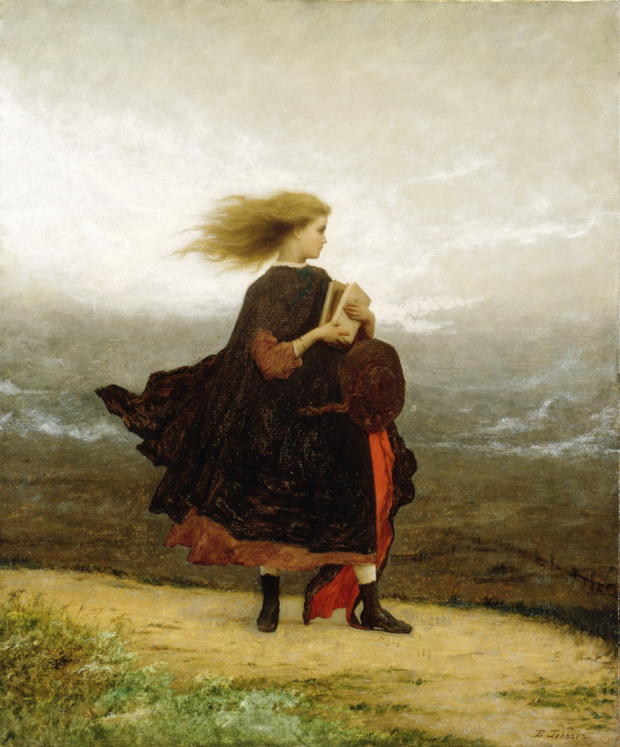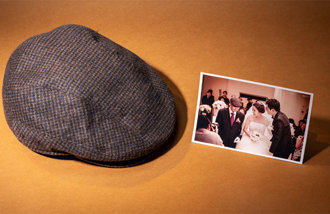War and books
War and books
Posted May. 18, 2023 07:59,
Updated May. 18, 2023 07:59

A girl with waving blond hair in a fluttering cape is on the brink of a cliff. She only stares blankly at the dire sceneries below her feet, taking any step neither forward nor backward. What has brought this girl to stand alone, holding books in her arms?
American artist Jonathan Eastman Johnson is famous not only for his portraits of prominent political leaders such as Abraham Lincoln but also for landscape or genre painting with ordinary people on canvas. A girl in the American Civil War is portrayed in “The Girl I Left Behind Me (1872),” which was drawn when he was 48. Given the ring on the finger, this young girl is presumed to be married. Waiting for her husband to return from war, she walks on the edge of the cliff. Surrounded by foggy and dark clouds, she stares down at the field divided in half by a fence. Indeed, the painting implies a world left in fear and instability during the civil war.
However, it was after the end of the civil war that this painting was completed. Confusion and conflicts across American society followed this disastrous war, killing and injuring more than a million citizens. As it was a violent conflict within the country, it must have been impossible to glorify heroes on the battlefield just as done by European artists. Instead, Johnson decided to describe how individual citizens suffer from the consequences of war and all the anxieties and fears in their hearts.
The painting was named after a British folk song written in the 18th century. Depicting a soldier missing his partner who waits for him to return home from war, this song was popular among the Union and the Confederacy during the war. When he worked on the painting, the artist had a wife and a two-year-old daughter after marrying late. More than ever before, he deeply felt how family matters.
The books in the girl's arms must be a Bible, a literary or a philosophical book. Could these books give her directions or console her broken heart? This is what this painting might have wanted to ask, questioning why all kinds of religious, literary, philosophical, and ideological knowledge, teachings, and lessons fail to prevent war and save young generations from losing their lives in a war triggered by those in power.







